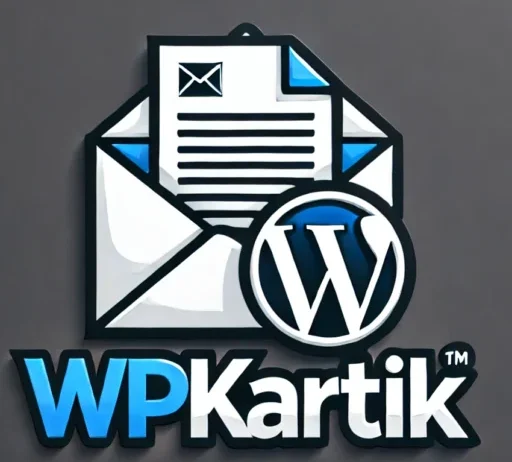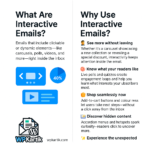Last updated on August 8th, 2025 at
Hey, stuck choosing between ActiveCampaign vs Aweber for your email marketing?
You’re not alone — it’s like picking between two different workout routines. One’s simple and gets you moving. The other is more advanced, packed with features, and maybe a bit intense at first.
AWeber is like the dependable, no-fuss routine. It’s beginner-friendly, easy to set up, and helps you send great-looking emails without a lot of tech skills. If you’re new to email marketing or want something that “just works,” AWeber keeps things smooth and simple.
ActiveCampaign, on the other hand, is the smart gym trainer with a whole plan. It’s powerful, customizable, and comes with a bunch of features like advanced automation, CRM, and segmentation tools. It’s great for serious marketers who want to get more personal and strategic with their emails — but it might take a little learning.
As always, it depends on what you need. Want something fast, easy, and supportive? Or are you ready for a more powerful, hands-on approach?
Let’s break it down and help you figure out which one’s the better fit for your business!
A Quick Intro to AWeber and ActiveCampaign
💡 What is AWeber?

AWeber is a beginner-friendly email marketing tool built for ease and simplicity. It’s been around since 1998, and it’s perfect if you just want to get started without diving into complex features. You get ready-made email templates, basic automation, landing pages, and a solid free plan to begin with.
✅ Best for: Beginners, bloggers, freelancers, and small businesses who want an easy way to start email marketing without tech headaches.
✨ What is ActiveCampaign?
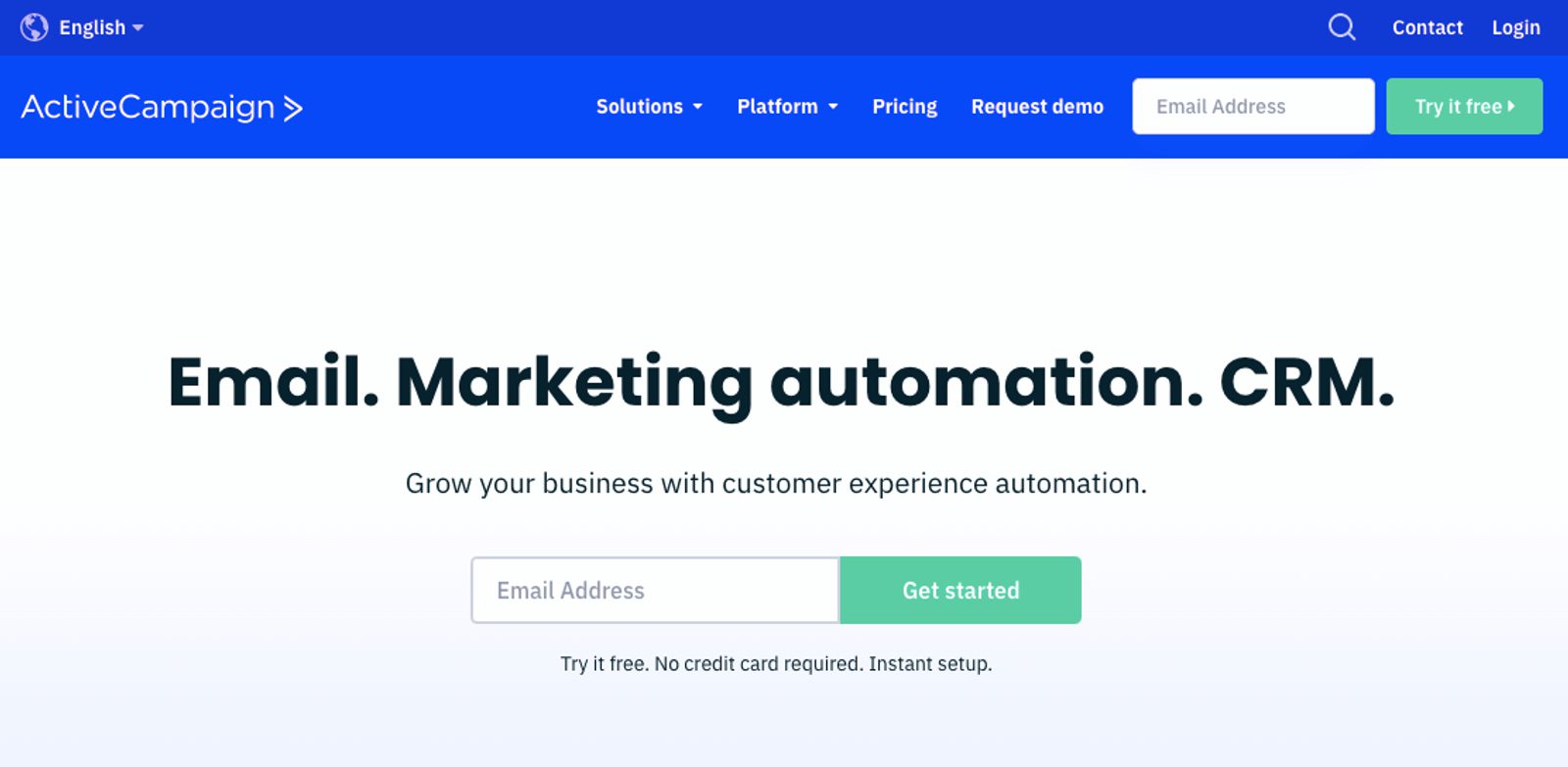
ActiveCampaign is a feature-rich email marketing and automation platform built for serious marketers. It offers powerful tools like smart automation, advanced segmentation, CRM integration, and detailed analytics. It’s not the easiest tool for beginners, but it gives you more control and customization if you’re ready to level up your marketing.
✅ Best for: Growing businesses, marketers, and teams who want advanced features, personalized emails, and automation superpowers.
Email Editor: Crafting Your Perfect Message
💬 Who win For Email Editor:
Writing Experience: What’s It Like to Actually Compose an Email?
AWeber feels like walking into a cozy room with everything neatly laid out.
You open the editor, drag in your blocks, type your message, and you’re done. No mess, no overwhelm.
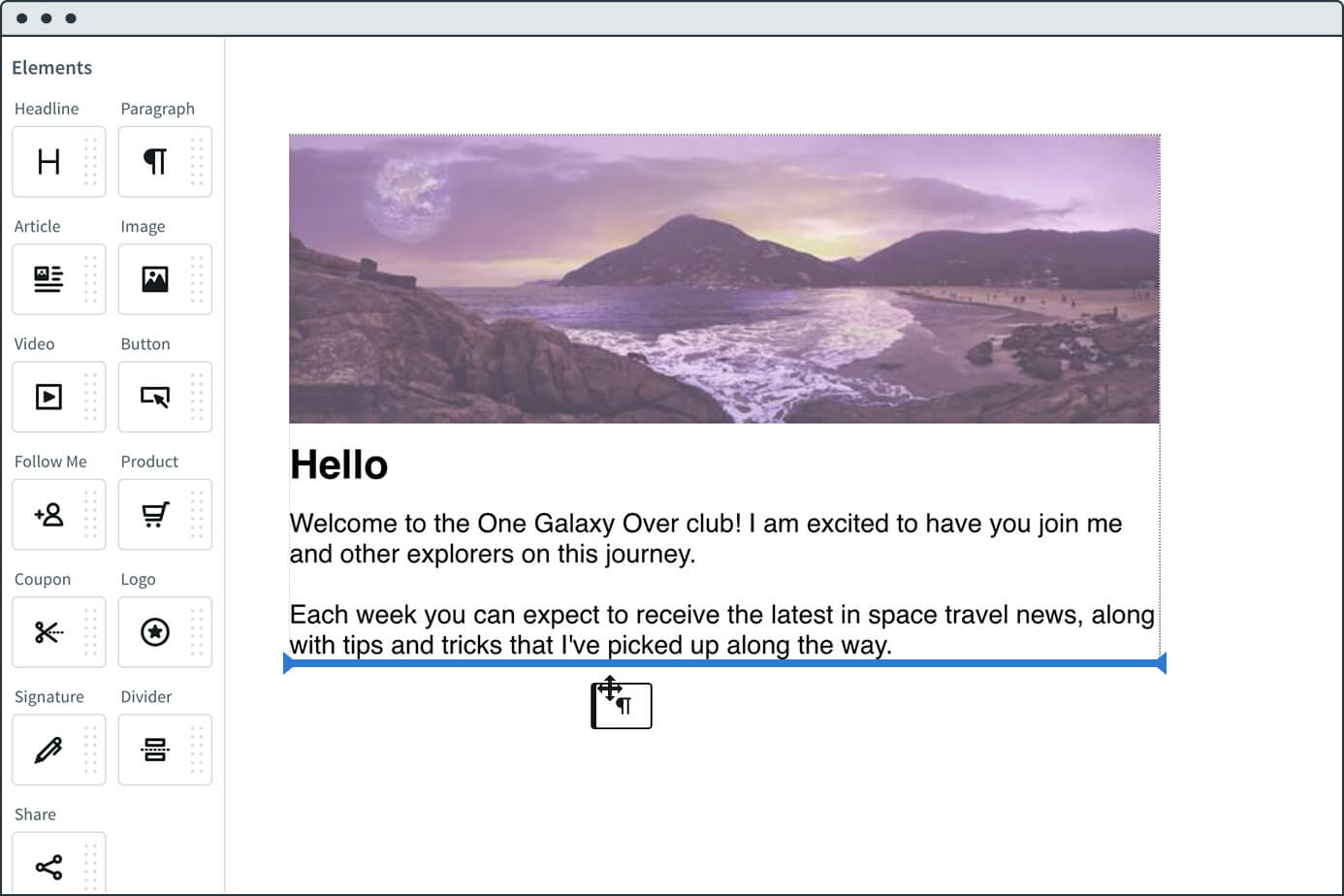
And I really like the Smart Designer feature — you just pop in your website URL, and it auto-generates branded templates. No fiddling with colors or logos. Took me literally 30 seconds. Magic.
If you’re like me and sometimes design your email graphics last-minute, the Canva integration inside AWeber is a lifesaver.
But here’s the catch: what you see is what you get. Once you want to personalize or segment content within the email — you’ve hit the limit.
I’ll be honest — the first time I used ActiveCampaign’s editor, I kinda just stared at all the buttons for a while 😅It’s not complicated, but it does take some clicking around to understand.
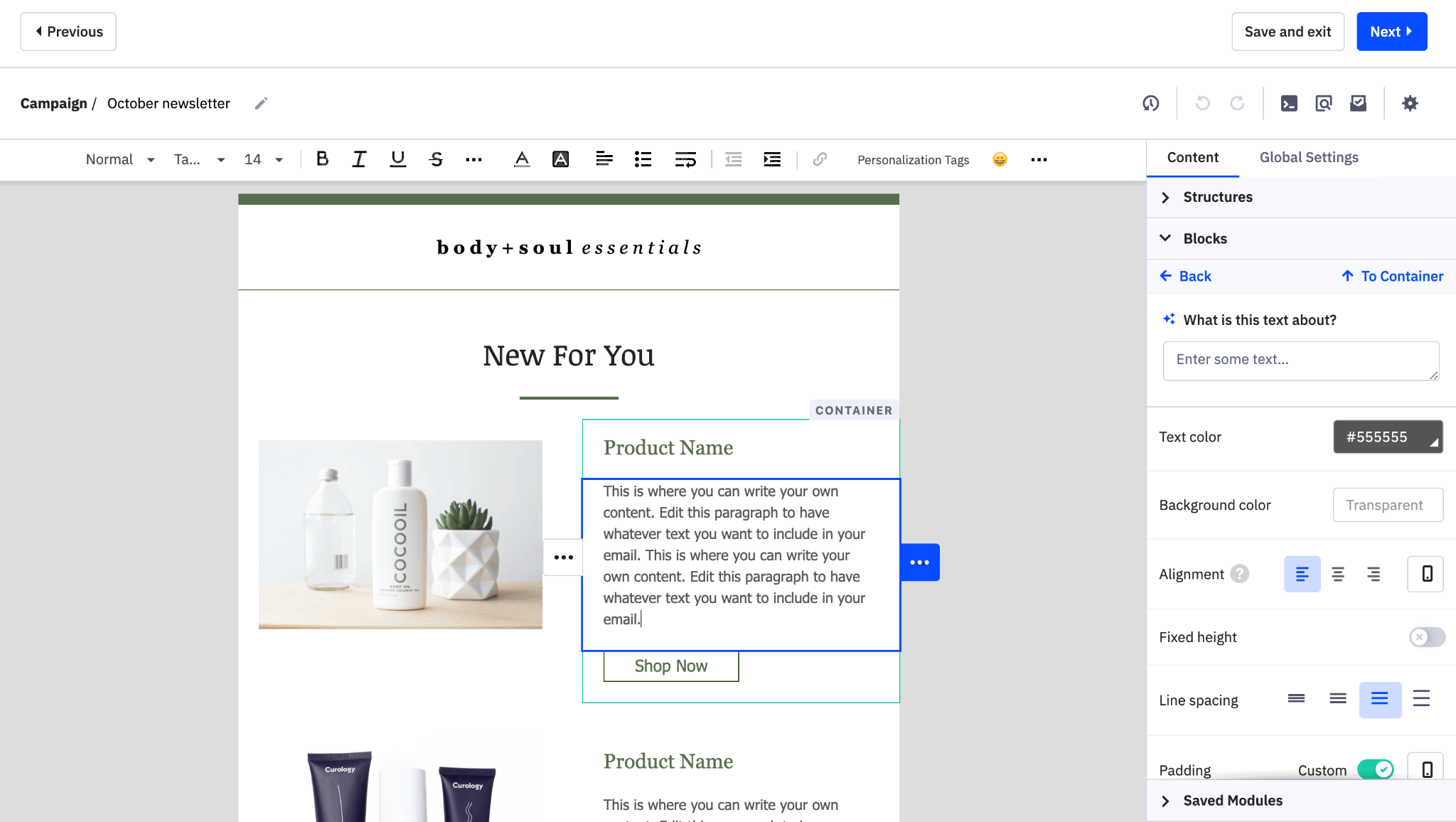
Once you get it though? It’s wild what you can do.
You can personalize blocks based on behavior (like showing a different offer to someone who clicked your last email), use saved content blocks, and build entire emails that feel like landing pages.
Layout & Design Tools: Are You Building or Just Writing?
🧰 AWeber: Drag-and-Drop Simplicity
AWeber’s drag-and-drop editor is perfect if you want to build emails without overthinking it.
Text + image + button = done.
There’s nothing fancy here — and honestly, that’s part of the charm. It’s clean, uncluttered, and lets you focus on getting your message out fast.
Just don’t expect next-level design options or dynamic layout tricks.
🧠 ActiveCampaign: Visual Builder with Brains
ActiveCampaign gives you all the layout freedom — columns, image grids, video blocks, CTA sections — you name it.
But what really sets it apart?
You can add conditional logic blocks. So, say you want new subscribers to see a welcome message, and returning readers to see a promo — all in one email. Boom. You can do that.
It’s like building mini landing pages right inside your inbox.
🔁 AWeber: Fresh Email Every Time
There’s no way to save reusable blocks or modules in AWeber. If you always include the same footer, disclaimer, or offer banner… you’ll be recreating it each time. Old-school copy-paste.
It’s fine if you’re only sending one email a week — but not ideal if you’re scaling up or working with a team.
🧱 ActiveCampaign: Built to Scale
ActiveCampaign lets you save and reuse blocks — like a header, testimonial, promo section, etc.
It’s one of those features you don’t realize you need… until it saves you 20 minutes on every email.
It also tracks changes, so you can collaborate or see who edited what — which makes it feel more like a grown-up tool.
🧠 Learning Curve: Can You Figure It Out Fast?
🛟 AWeber: Log In, Start Writing
If you’ve ever used a website builder or any kind of drag-and-drop tool, AWeber will feel like second nature.
There are very few settings to get lost in, and the whole platform feels geared toward beginners or non-techy users.
🧗 ActiveCampaign: Worth the Climb
It takes a bit to get used to ActiveCampaign’s editor — no sugarcoating it.
There’s more going on, and the logic/personalization options can feel overwhelming at first.
But once you “get it,” you start to see how powerful it really is — especially if you’re building out automations and smarter campaigns later.
👉 Mini Verdict:
AWeber wins for ease of use.
ActiveCampaign wins for long-term power — but you’ll need to invest time upfront.
Design & Flexibility: Make It Look (and Work) Your Way
💬 Who wins for design and flexibility?
Templates: Do You Want a Head Start?
🧰 AWeber: 600+ Templates, Already Styled
The first time I opened AWeber, I was honestly surprised by how many templates they had. Over 600 mobile-friendly layouts, and most of them look solid right out of the box. No design degree required.
And the Smart Designer? You just paste in your website, and it builds a branded template for you. Like… matching fonts, colors, and your logo. Took me 30 seconds. Felt like cheating 😅
🧠 ActiveCampaign: Sleek But Sparse
ActiveCampaign takes the “less is more” route. Fewer templates — but the ones they have are modern and minimal. If you’re planning to customize heavily anyway, that might actually be a good thing.
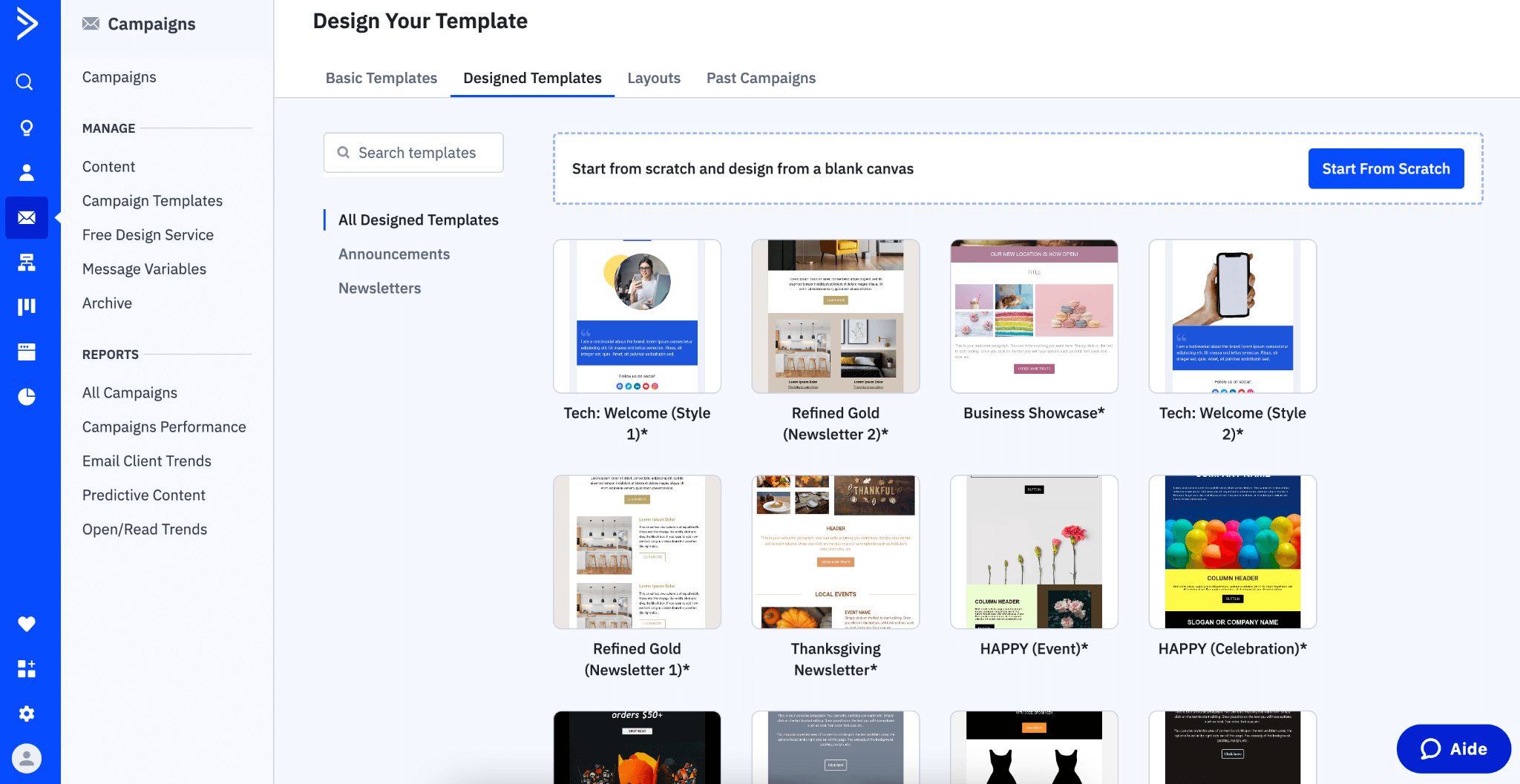
👉 Mini Verdict:
AWeber wins for sheer volume and branding ease.
ActiveCampaign wins if you prefer a clean starting point to build on.
Layout Flexibility: How Much Can You Actually Build?
🧰 AWeber: Keep It Simple
AWeber’s drag-and-drop is built for speed. Want to drop in text, image, button, and send? You’re done in 5 minutes.
But — no complex layouts, no grids, no multi-column fancy stuff. It’s not built for that.
🧠 ActiveCampaign: Build It How You Want It
With ActiveCampaign, you get a full-blown visual builder. Columns, sections, video embeds, content dividers — all easy to drop in.
The best part? You can use conditional blocks. That means showing different sections of the email depending on who’s reading — based on tags, purchase behavior, or email history.
👉 Mini Verdict:
AWeber wins if you’re focused on speed and clarity.
ActiveCampaign wins if you want true layout control.
Visual Tools: Do You Use Graphics?
🧰 AWeber: Canva Inside the Editor 🎨
This is low-key one of my favorite features: AWeber has Canva built in.
If you design your graphics last-minute (guilty 🙋♀️), you can just pop open Canva from inside the editor, make something quick, and insert it straight into your email.
🧠 ActiveCampaign: Bring Your Own Designs
No Canva integration here. You’ll need to design in Canva (or Photoshop or whatever) and upload your images manually.
👉 Mini Verdict:
AWeber wins if you use Canva or want fast visuals without switching tabs.
Smart Styling: How Much Can You Customize?
🧰 AWeber: Theme Settings = Fast Styling
Want to change all your fonts, buttons, or colors in one go? AWeber’s Theme Settings make that super easy — it applies across the whole email. No coding. No hunting.
🧠 ActiveCampaign: Total Control, But More Manual
ActiveCampaign gives you deep control over styling — but it’s section-by-section. You can customize everything, but it’s slower unless you set up templates or use custom code.
👉 Mini Verdict:
AWeber wins for quick, global styling.
ActiveCampaign wins if you’re a control freak (no shame 😂).
List Management: Keep Your Audience Organized
💬 Who win For Lists and Segmentation:
AWeber: Simple Lists, Tags & Segments for Starters
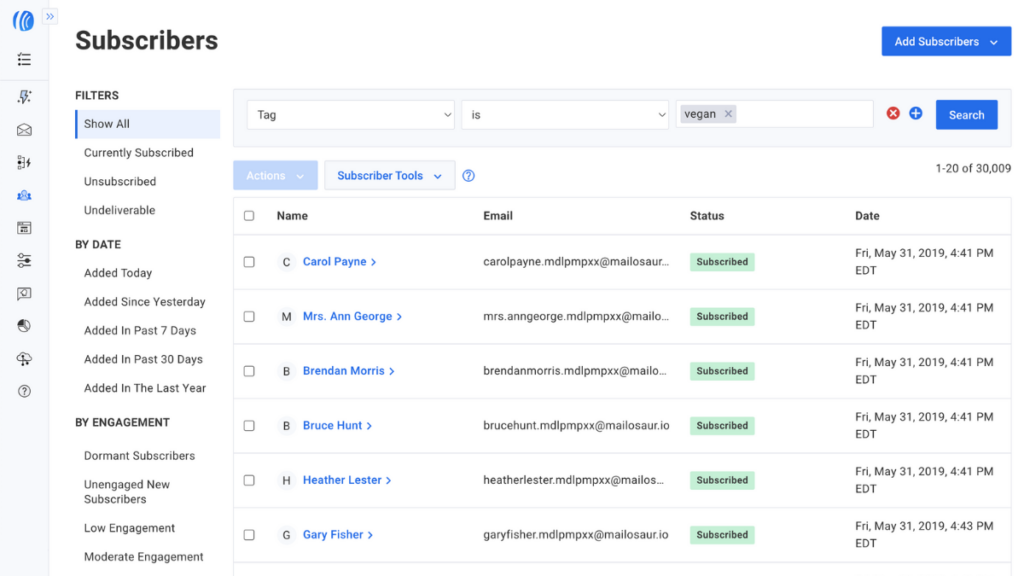
When I used AWeber, list management was super straightforward. You create a list, maybe add some tags, and you’re ready to start sending.
Here’s what worked for me:
I could tag subscribers based on sign-up source or link clicks.
Setting up basic segments was easy — great for quick targeting.
Ideal when your list is small and your campaigns are simple.
But here’s the catch:
AWeber still uses a traditional “list-based” system, which means if one person is on two lists, they count as two contacts — yep, even for billing. That’s fine when you’re starting out, but it becomes messy (and expensive) as your list grows.
Also, there’s no dynamic behavior-based automation for segments. Tags don’t update in real-time unless you create manual rules or use workarounds.
✅ Best for: Beginners and small creators who want a clean and simple system without all the bells and whistles.
✅ Easy to use
✅ Tag-based segmentation
✅ Great for beginners
❌ Same contact in two lists = double count
❌ Limited automation based on tags
ActiveCampaign: Smart, Real-Time Segmentation for Growth
ActiveCampaign changed the way I manage contacts — and not in a small way.
What impressed me most:
One contact = one record (no matter how many lists they’re in). So clean.
You can tag people based on what they do — like clicking a link, visiting a page, or buying something.
Segments are dynamic — they update automatically as user behavior changes. No manual tagging or rebuilding lists.
Honestly, it felt like the system was doing half my work for me. I could focus more on what to send, and less on who to send it to — because ActiveCampaign handled that behind the scenes.
The downside? More setup upfront. And if you’ve never worked with automations or tags before, it can feel a little overwhelming at first.
✅ Best for: Marketers, ecommerce brands, and teams that want to build automated, behavior-driven email funnels and personalized content at scale.
✅ Real-time tagging & updates
✅ Advanced behavioral segmentation
✅ One contact = one record (no duplicates)
❌ Can be complex at first
❌ Requires more setup for beginners
Forms & Landing Pages: Capture Leads with Style
💬 Who win For Forms and Landing Pages:
AWeber
Easy Forms and Landing Pages for Beginners
AWeber offers a solid set of tools for collecting leads. You get ready-made sign-up forms and a drag-and-drop landing page builder with templates. You can add videos, images, and custom branding without touching code.
It also includes tag-based automation triggers, so when someone fills out a form, you can instantly tag them and start a follow-up sequence.
✅ Easy-to-use form builder
✅ 100+ landing page templates
✅ Tag-based automation from form entries
✅ No-code design, beginner-friendly
❌ Limited advanced form customization
❌ Fewer layout controls than some competitors
ActiveCampaign
Flexible Forms with Smart Automation
![10 Best White Label Landing Page Builders In 2025 [Ranked]](https://passivesecrets.com/wp-content/uploads/2023/02/landingi-landing-page-template-page-1024x628.png.webp)
ActiveCampaign’s forms are more advanced and built to integrate deeply with automation. You can trigger workflows, apply tags, and even track site visits right after someone submits a form.
While it doesn’t offer a full landing page builder like AWeber, it does support inline, floating bar, modal, and pop-up forms — all customizable and powerful. If you need full landing pages, you’ll need to connect a third-party builder like Unbounce or Leadpages.
✅ Multiple form types (pop-up, floating, inline)
✅ Full automation triggers from form actions
✅ Site tracking integration
✅ Strong targeting with tags and fields
❌ No built-in landing page builder
❌ Slightly more complex to set up
Final Word: Which Should You Choose?
Go with AWeber if you:
Want a beginner-friendly list system
Don’t need complex automations or behavioral logic
Are okay manually tagging and segmenting subscribers
Go with ActiveCampaign if you:
Want smart, auto-updating segments
Plan to scale and run behavior-based campaigns
Need a clean, flexible contact database without duplicates
👉 My advice:
If your audience is small and you just want to send occasional newsletters — AWeber is easy and efficient.
But if you’re serious about growth, automation, and personalization — ActiveCampaign will make your life easier in the long run.
🤖 Email Automations: Let the Emails Work for You
💬 Who wins for email automation?
This one’s pretty clear.
👉 AWeber wins if you want simple automations that are easy to build and launch — great for welcome sequences or basic follow-ups.
👉 ActiveCampaign wins big if you want to automate everything, based on real behavior, with advanced flows and smart logic.
Let’s break it down:
AWeber: Basic Automation That Just Works

When I used AWeber for automation, it felt more like a “get-it-done” tool than a full automation engine — and that’s actually a good thing for beginners.
Here’s what worked:
I could create simple drip campaigns like welcome sequences in minutes.
Automation triggers based on tags or link clicks made it easy to slightly customize the journey.
Pre-built templates helped speed up the setup.
But once I wanted to do more — like split paths based on actions, or wait for someone to visit a certain page — I hit a wall. AWeber is good for basics, but it lacks deeper tools like conditional paths, goals, or advanced triggers.
✅ Best for: New email marketers who need automation to be fast, visual, and low-stress.
✅ Easy to build
✅ Tag-based triggers
✅ Pre-built automation templates
❌ No advanced conditional flows
❌ Limited behavior tracking
ActiveCampaign: Advanced Automation for Smart Marketers
This is where ActiveCampaign absolutely shines — and why I still use it for clients who need serious automation.
Here’s what I loved:
You get a visual workflow builder that feels more like designing a flowchart than an email sequence.
It can trigger emails based on user actions, purchases, site visits, email opens, and way more.
You can add if/else logic, wait conditions, goals, tags, CRM updates, and build journeys that adapt in real-time.
Yes, it takes longer to set up. But once it’s running, it feels like you’ve built a marketing engine that runs 24/7 — delivering the right message at the right time.
✅ Best for: Marketers, agencies, ecommerce stores, or anyone who wants scalable, data-driven automation.
✅ Visual automation builder
✅ Powerful conditions & triggers
✅ Full integration with CRM, tags, and site tracking
❌ Learning curve for beginners
❌ Can feel overwhelming if you only need basic sequences
Final Word: Which Should You Choose?
Go with AWeber if you:
Only need basic sequences like a welcome series or lead follow-up
Want a clean, beginner-friendly interface with no steep learning curve
Don’t need behavior-based branching or advanced logic
Go with ActiveCampaign if you:
Want to build complex automation flows based on behavior
Need detailed triggers, segmentation, and personalization
Use email as a major part of your sales or customer journey
👉 My advice:
AWeber is great if you want to set it and forget it.
But if your email list is part of a larger sales or content strategy, ActiveCampaign will pay off big time in the long run.
Reports: See What’s Working (and What’s Not)
💬 Who win For Reports?
AWeber: Simple Stats for Everyday Email Campaigns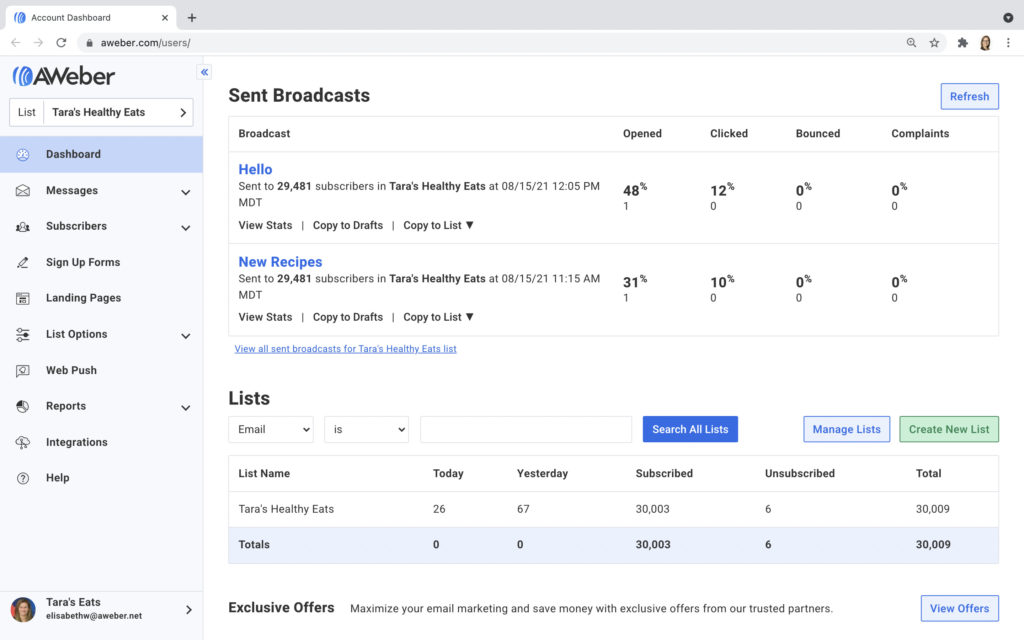
When I checked out AWeber’s reports, I found them clean and easy to understand — great if you just want to know how your emails performed, fast.
What stood out:
You get open rates, click rates, unsubscribes, and bounce stats right on the dashboard.
It shows which links got clicks, so you know what your readers liked.
Campaign-level reporting lets you see how each email in a sequence did, which is handy.
But if you want to dig into customer behavior over time, or analyze sales data alongside emails, AWeber won’t get you there.
✅ Best for: Beginners and small businesses who want quick, visual feedback on their email campaigns.
✅ Clean, visual reporting
✅ Click tracking
✅ Campaign-level stats
❌ No advanced funnel tracking
❌ Limited segmentation or eCommerce reporting
ActiveCampaign
Advanced Insights for Data-Driven Marketers


ActiveCampaign’s reporting is a whole other level — it’s designed for marketers who want to optimize every step of their funnel.
Here’s why it’s powerful:
You get real-time data on automations and campaigns so you can see what’s working right now.
It tracks goals and conversions, letting you measure success beyond just opens or clicks.
If you use their CRM, you also get sales pipeline tracking and deal insights — all linked back to your email campaigns.
You can dig into detailed contact activity history, making personalization smarter.
The downside? The interface can be overwhelming at first, and some reports require more expensive plans.
✅ Best for: Advanced marketers, ecommerce teams, and anyone who wants deep data to refine their marketing.
✅ Real-time automation & campaign reports
✅ Track goals and conversions
✅ CRM + deal tracking (if enabled)
✅ Contact activity history
❌ Can feel overwhelming at first
❌ Some reports are locked behind higher-tier plans
Final Word: Which Should You Choose?
Go with AWeber if you:
Want quick, clean reports without complicated data
Don’t need to track sales or advanced automation performance
Prefer a simple dashboard that’s easy to understand
Go with ActiveCampaign if you:
Want to analyze every step of your marketing funnel
Use automation and CRM heavily to drive sales
Need detailed reports to improve campaigns and conversions
👉 My advice:
If you’re just starting out, AWeber’s reporting is easy and effective.
But if your email marketing is a core business channel, ActiveCampaign’s advanced insights will give you the edge.
Email Deliverability: Getting Into the Inbox
💬 Who win For Email Deliverability?
AWeber: Reliable Delivery Without the Complexity
When I sent campaigns through AWeber, my emails consistently landed in inboxes, not spam folders. They keep things straightforward by focusing on:
Strong list hygiene and compliance, so you avoid spam traps and bad addresses.
Built-in spam checking tools that catch issues before you hit send.
Easy-to-understand delivery stats, so you can spot problems fast.
Support that helps if you ever run into deliverability hiccups.
This makes AWeber a great choice if you want to send emails confidently without diving into complicated settings or tools.
✅ Best for: Beginners or small businesses who want dependable email delivery with zero hassle.
✅ Solid inbox placement
✅ Spam-checking built in
✅ Easy to manage sender reputation
❌ Fewer advanced delivery tools
❌ No inbox preview or AI send time optimization
ActiveCampaign: Smart Tools to Boost Inbox Reach
ActiveCampaign takes a more high-tech approach. It uses machine learning to:
Optimize send times for each subscriber, so emails arrive when they’re most likely to be opened.
Show you inbox previews to see exactly how your email looks on different devices and email clients.
Run spam score tests before sending to catch potential red flags.
Use engagement-based segmentation to focus on subscribers who actually want to hear from you, boosting your sender reputation.
It’s a bit more complex to set up, but if deliverability is mission-critical for your marketing, these extra features can make a real difference.
✅ Best for: Marketers and growing businesses who want every tool possible to maximize inbox placement.
✅ Send time optimization
✅ Inbox previews
✅ Spam score testing
✅ Engagement-based segmentation
❌ More features = more complexity
❌ Some tools only available on higher-tier plans
Final Word: Which Should You Choose?
Choose AWeber if you:
Want strong deliverability without extra complexity
Prefer a set-it-and-forget-it email tool
Are new to email marketing or don’t want to overthink delivery
Choose ActiveCampaign if you:
Need every advantage to land in the inbox
Are ready to leverage AI and detailed previews
Want to use engagement data to keep your list healthy and active
👉 My take:
For most beginners and small businesses, AWeber’s reliable delivery is plenty good.
But if you’re running serious marketing campaigns and want the smartest tools, ActiveCampaign’s advanced features can give you a real boost.
Pricing: Choose the Plan That Fits Your Budget
💬 Who win For Pricing?
👉 AWeber is great if you want simple, predictable pricing that grows steadily with your list.
👉 ActiveCampaign offers more powerful features but can get expensive as your contacts increase — and its pricing depends a lot on what features you want.
AWeber Pricing: Simple and Predictable
If you’re just starting out, AWeber’s free plan is a lifesaver:
Manage up to 500 subscribers
Send 3,000 emails/month
Access basic email tools, 1 list, and 1 automation
Perfect for hobbyists, bloggers, or tiny businesses just testing the waters.
Paid plans kick off at about $12.50/month (annual billing) for 500 subscribers and rise gradually as your list grows.
Lite plan: More templates, landing pages, and automation options
Plus plan: Adds advanced segmentation, detailed analytics, and unlimited lists
What I liked: Pricing steps up clearly based on subscriber count — no surprises here. This makes budgeting easier, especially if your list grows slowly but steadily.
Oh, and paying yearly saves you about 15% compared to monthly.
✅ Best for: Beginners and small businesses who want clear, easy-to-understand pricing without sudden jumps.
🔵 ActiveCampaign Pricing: Feature-Packed but Can Add Up
ActiveCampaign’s pricing starts a bit higher — about $19/month for 500 contacts on the Starter plan with basic email and automation features.
If you want CRM, landing pages, SMS marketing, or AI-driven tools like predictive sending, you’ll be looking at Plus or Pro plans, which start around $59-$99/month for the same contact count.
ActiveCampaign charges by total contacts, but here’s the kicker: one subscriber counts only once no matter how many lists they’re in. So if you use multiple lists, you might save money compared to AWeber.
However, as your list grows, the price can jump quickly, especially if you want all the advanced marketing tools.
Annual billing saves you about 20% versus monthly payments.
✅ Best for: Growing businesses and marketers who need powerful features and don’t mind paying more for them.
Final Word: Which Should You Choose?
Choose AWeber if you:
Want clear, predictable pricing with a solid free tier
Prefer a plan that grows steadily with your list size
Are budget-conscious or just starting out
Choose ActiveCampaign if you:
Need advanced marketing features like CRM and predictive sending
Have multiple lists and want to avoid paying for duplicates
Are ready to invest more for powerful automation and analytics
👉 My advice:
For beginners and small businesses, AWeber’s pricing is easier on the wallet and simpler to understand.
If you’re scaling fast and want all the bells and whistles, ActiveCampaign’s pricing reflects that power — but watch your list size and feature choices closely!
AWeber vs ActiveCampaign – Which One Should You Choose?
Choosing between AWeber and ActiveCampaign really comes down to your business size, marketing goals, and how much control and automation you want in your email campaigns.
✅ Pick AWeber if:
You want a simple, beginner-friendly platform that just works without a learning curve.
You prefer straightforward, predictable pricing — plus a solid free plan to get started risk-free.
You’re a small business, blogger, or entrepreneur who needs reliable email marketing without overcomplicating things.
You value good customer support and handy built-in branding tools like Smart Designer and Canva integration.
✅ Pick ActiveCampaign if:
You want powerful, advanced automation and CRM features to grow your marketing strategy.
You’re ready to invest more time and money for sophisticated segmentation, personalization, and dynamic emails.
You need detailed reporting and customer journey insights to optimize every campaign.
You want a platform that can scale with your business and handle complex marketing workflows.
👉 My Suggestion:
If you value simplicity, ease of use, and clear pricing, AWeber is an excellent choice—especially if you’re just starting out or running a smaller business.
But if you want a feature-rich platform with advanced automation, deep personalization, and CRM capabilities, ActiveCampaign is the better option — just be prepared for a steeper learning curve and higher cost.
Alternatives to AWeber and ActiveCampaign: More Options to Explore
MailerLite

MailerLite – Simple, Affordable, and Easy to Scale
MailerLite is a user-friendly email marketing tool that balances simplicity with enough advanced features for growing businesses. It’s great for small teams looking for clean design tools and solid automation without breaking the bank.
Key Features
Intuitive drag-and-drop editor and rich text editor options
Basic automation workflows like welcome emails and drip campaigns
Landing page and popup builder included
Strong focus on deliverability and simple segmentation
Why Choose MailerLite?
Ideal for those who want an affordable, straightforward solution with good scalability. It’s beginner-friendly but also offers enough power for businesses growing beyond simple email blasts.
Pricing Plans
Free Plan: Up to 1,000 subscribers, 12,000 emails/month
Paid Plan: Starts at $10/month, scaling with subscriber count
You can checkout full Comparison of Mailerlite and Activecampaign here
Omnisend
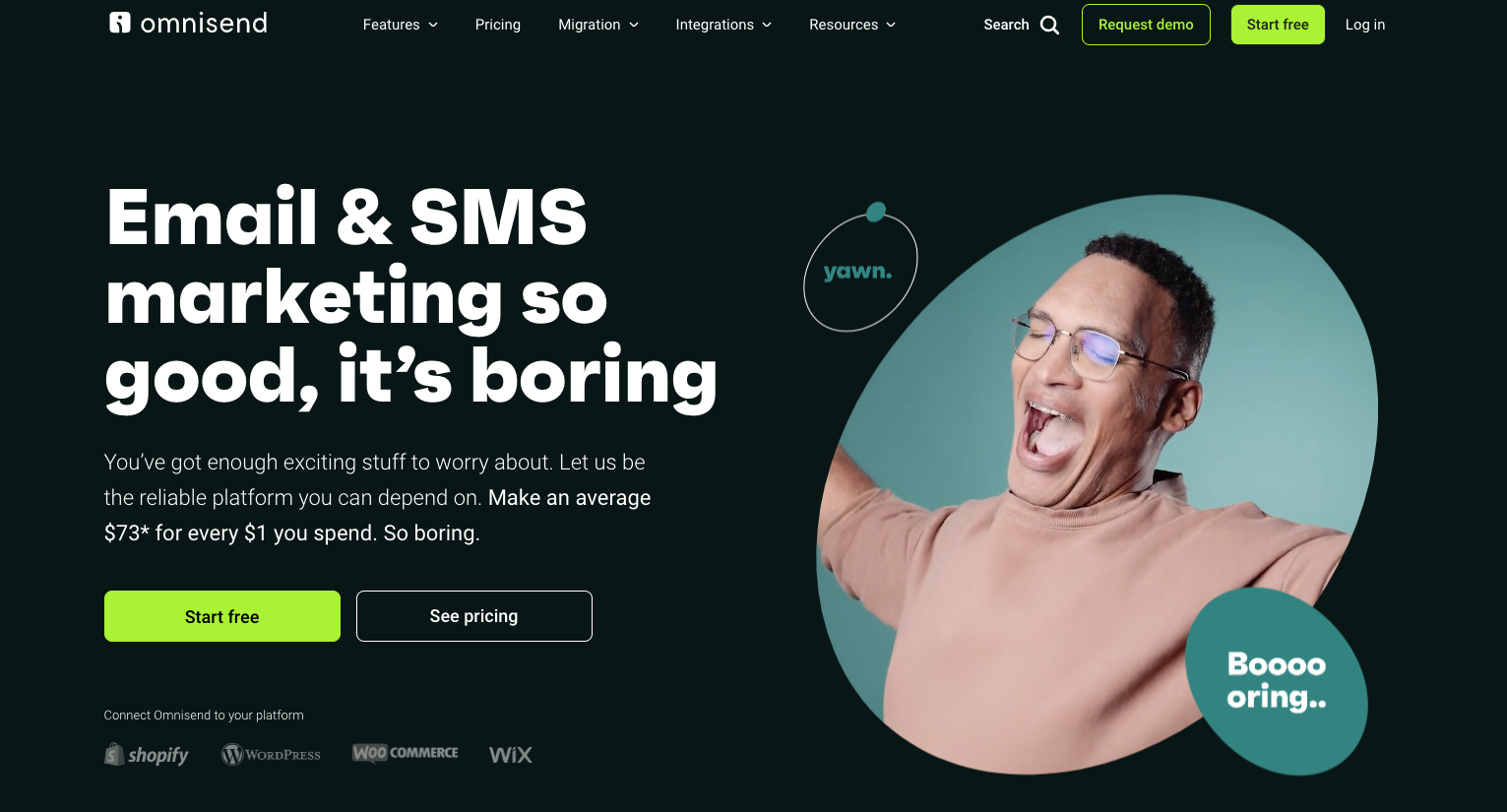
Omnisend – Ecommerce-Focused Automation and Multichannel Marketing
Omnisend is designed with online stores in mind, combining email marketing with SMS, push notifications, and other channels. It offers powerful automation workflows, product picker tools, and pre-built ecommerce templates to boost sales and engagement.
Key Features
Multichannel campaigns: email, SMS, push notifications, and more
Pre-built automation workflows for cart recovery, welcome series, and order follow-ups
Drag-and-drop email editor with ecommerce-specific blocks (product recommendations, discount codes)
Integrations with major ecommerce platforms like Shopify, BigCommerce, and WooCommerce
Why Choose Omnisend?
Perfect if you run an online store and want to combine email with SMS and other channels in one platform. Omnisend’s ecommerce focus and easy automation make it a strong contender.
Pricing Plans
Free Plan: Up to 500 emails/day, 60 SMS messages/month
Standard: Starting at $16/month (additional emails cost extra)
Pro: Starts at $99/month, adds advanced features and more channels
GetResponse
GetResponse – All-in-One Marketing Platform With Webinar and CRM
GetResponse is more than just email marketing; it’s a full marketing suite including webinars, CRM, landing pages, and automation. It’s perfect for marketers who want an integrated tool that covers multiple channels and lead generation tactics.
Key Features
Email marketing plus webinar hosting and CRM features
Drag-and-drop email creator and advanced automation builder
Conversion funnel tools and landing page builder
Detailed analytics and A/B testing
Why Choose GetResponse?
If you want an all-in-one platform combining email, webinars, CRM, and funnels, GetResponse packs it all in one place. It’s a great option for businesses with diverse marketing needs.
Pricing Plans
Basic: Starts at $15/month for 1,000 contacts
Plus: $49/month with automation, webinars, and CRM features
Professional: $99/month with advanced marketing tools
